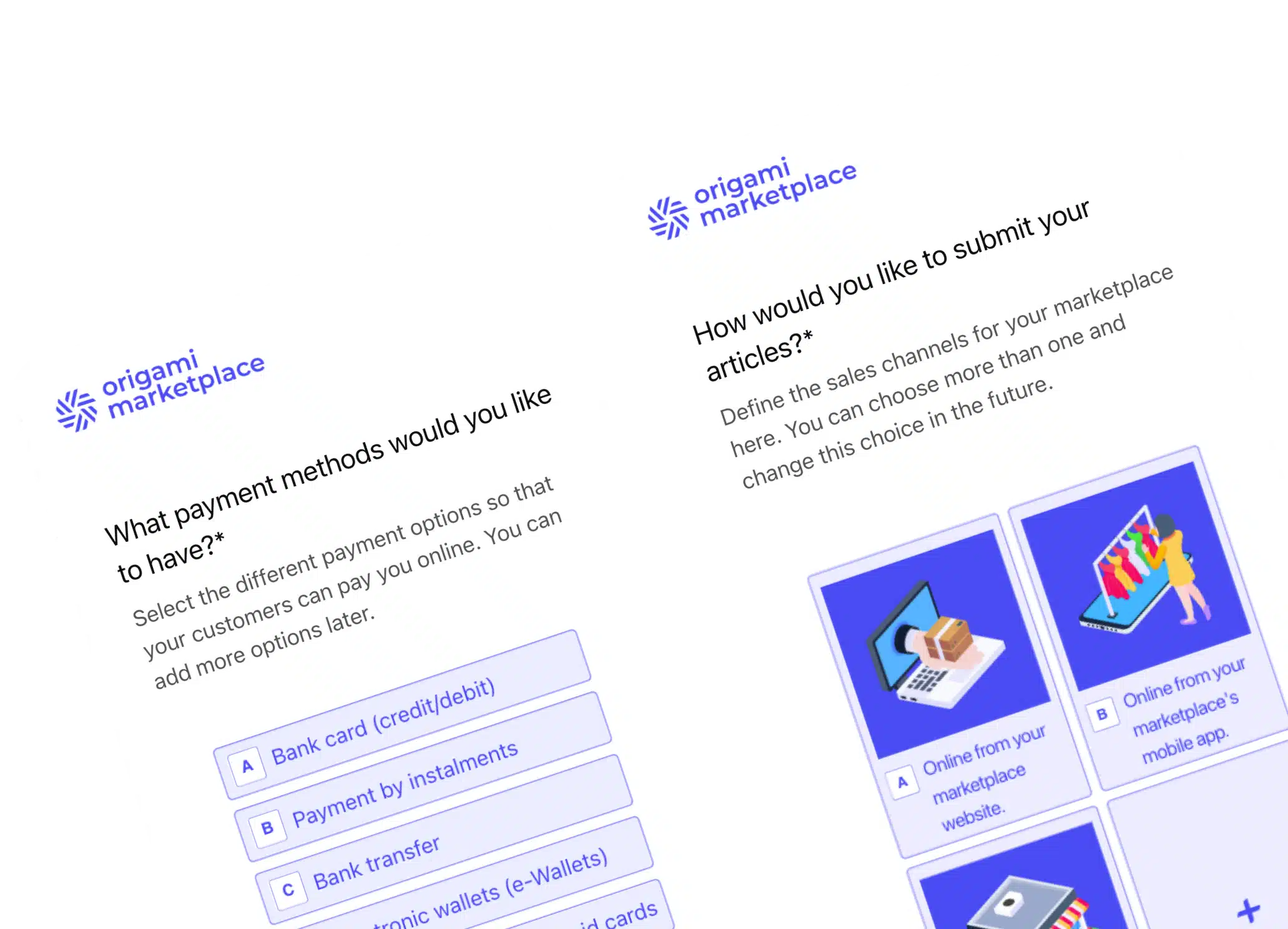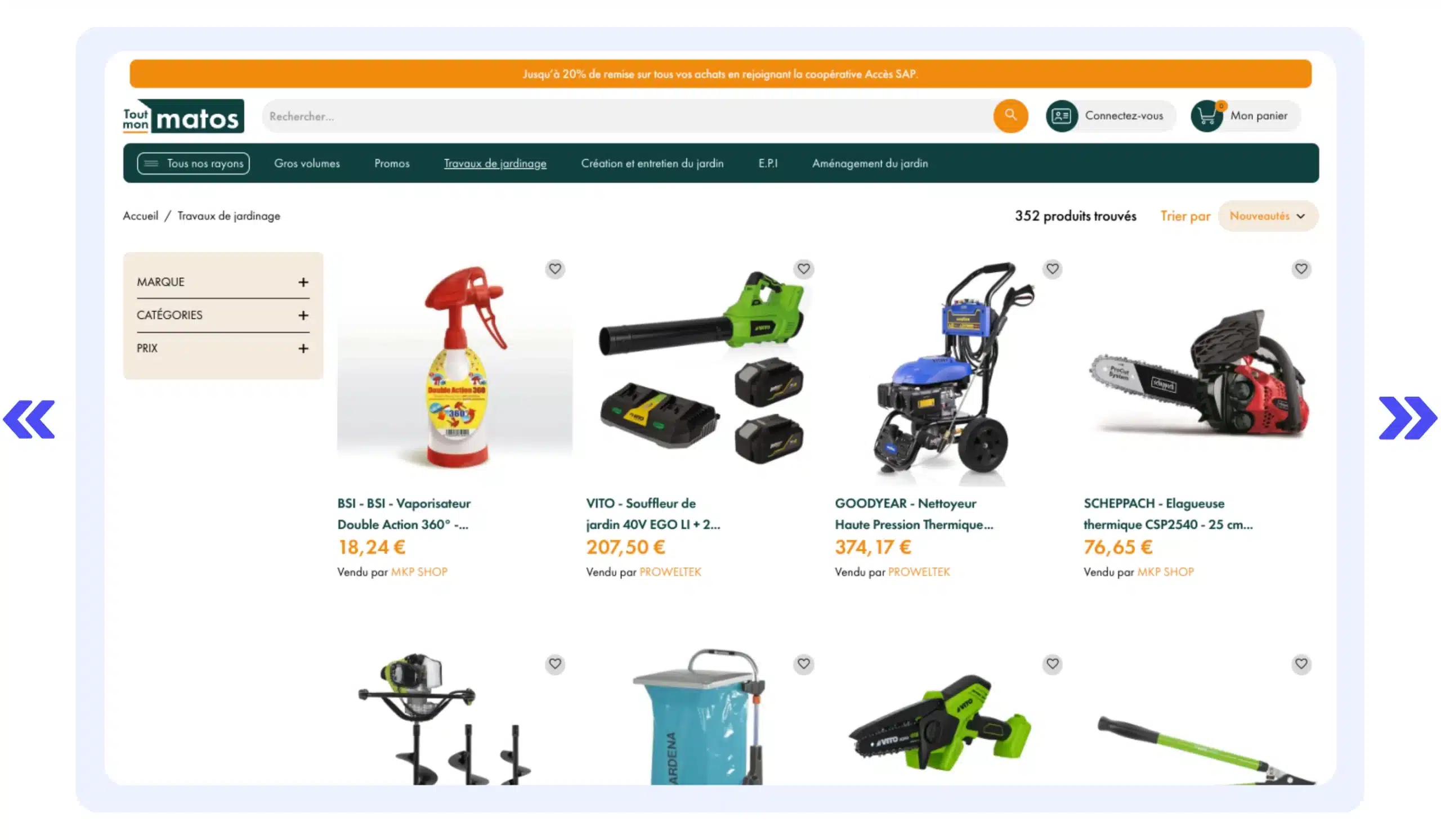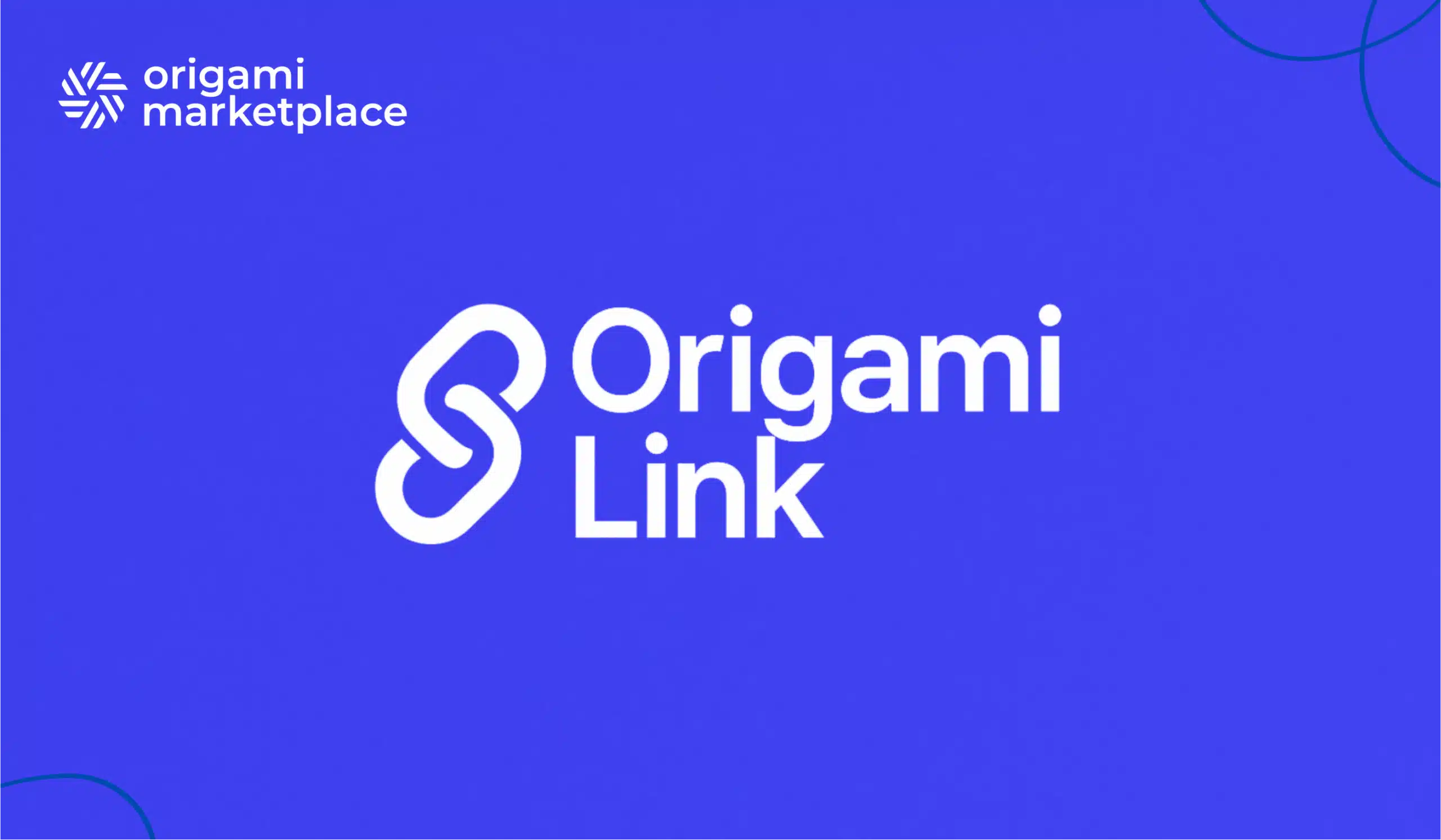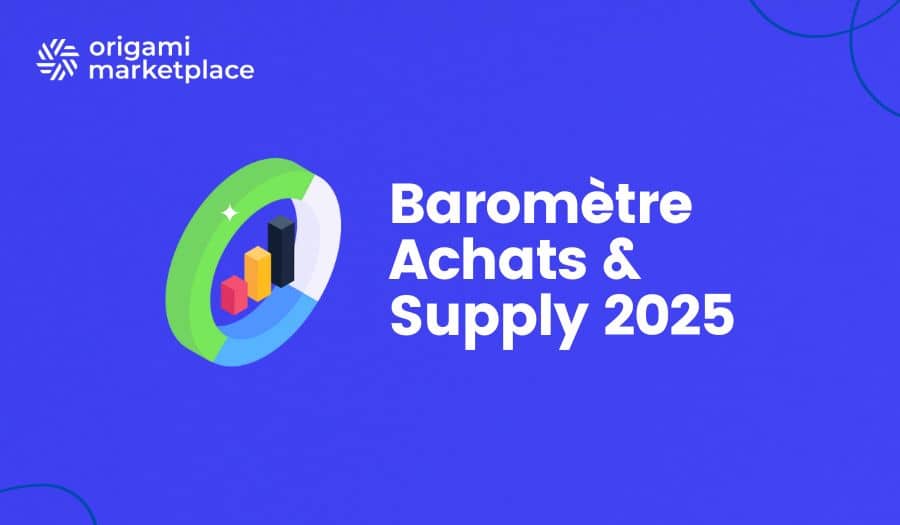Ultimate guide to successful UI & UX Design for your marketplace
- Arnaud
- 6 minutes reading

Launching a high-performing marketplace requires much more than just selecting the right technical solution. It involves creating a comprehensive experience where UX (User Experience) and UI (User Interface) come together to provide intuitive navigation and an attractive design. This article delves into the very essence of a marketplace, covering the essential features and design elements, best practices to adopt, and practical tips to turn your project into a success.
- What is a marketplace?
- Key features for a high-performing marketplace
- Essential design elements for a marketplace
- The importance of UI/UX Design for your marketplace
- Best Practices for designing a marketplace with successful UX
- Tips for creating an impactful UX Design for your marketplace
- Focus on toutmonmatos.fr
- How Origami Marketplace can help you
👋 No time to read the whole article? Find the summary of the article here.
1. What is a marketplace?
A marketplace is a digital platform that connects sellers and buyers to facilitate the sale of products or services. Unlike a traditional e-commerce site where a single entity offers its products, a marketplace allows multiple sellers to showcase their offerings. This approach promotes product diversity, encourages competition, and drives innovation. The success of such a platform relies on the quality of the User Experience (UX) and User Interface (UI), which are essential to transforming visitors into loyal customers.
The main objectives of UX and UI are:
- For the operator and sellers: Maximize product visibility, simplify catalog and inventory management, ensure efficient tracking of sales and stocks, and facilitate smooth and professional customer relationship management.
- For the buyer: Ensure fast and intuitive navigation, provide accurate and efficient search features, establish a sense of trust throughout the buying journey, and offer a seamless and hassle-free shopping experience.
2. Key features for a high-performing marketplace
To succeed in the world of marketplaces, some essential features must be integrated from the very beginning:
- Seller account and product management: Tools that allow sellers to manage their store, publish or update listings, track sales, and interact with customers.
- Order processing: An efficient process to ensure proper order execution, guarantee timely delivery, and build customer trust.
- Cart and payment system: Intuitive and secure interfaces to facilitate transactions, reduce cart abandonment, and reassure users about the safety of their payments.
- Customer account management: Personalized spaces where buyers can manage their profile, preferences, order history, and receive tailored recommendations.
- Product lists and catalogs: Clear and detailed product presentations with descriptions, images, prices, and filtering tools to enhance product discovery.
- Product sheets: Concise and attractive summaries that present key product information (images, specifications, reviews) to support quick decision-making.
- Customer support: Communication channels (chat, email, phone, or virtual assistants) that efficiently address user questions and resolve issues.
- Return policy: A simple and transparent return process that reassures buyers and fosters a trusting relationship with the platform.
- Advanced search and dynamic filtering: Intuitive search tools with customizable filters that allow users to quickly find the desired product.
- Customer reviews and ratings management: Transparent rating and comment systems to help users make informed decisions and boost product credibility.
- Mobile optimization: Adapting the user experience for smartphones and tablets to ensure smooth and responsive navigation across all devices.
- Personalization and data-driven recommendations: The ability to offer product suggestions based on users’ shopping behaviors and preferences.
- Personalized notifications and alerts: Real-time alert systems to inform users about order status, promotions, or product returns.
These features form the foundation of a marketplace that is both functional and competitive.
Ready to turn your B2B, B2C, or C2C marketplace vision into reality?
To help you develop the best platform possible, we’ve gathered all the must-have features, key technical considerations, and best practices in a comprehensive document:
Download the Specifications template 🗒
Perfect for smaller or medium-scale projects without a formal purchasing process. It will help you outline your requirements effectively and streamline your selection process.
Download the Request for Proposal template 📒
Ideal for larger, more complex marketplace projects with a formal purchasing department or advanced procurement policies.
3. Essential design elements for a marketplace
The design of a marketplace is not just about aesthetics – it must meet functional requirements to ensure an optimal user experience.
- Smooth and structured navigation: A clear architecture with an accessible menu and well-placed call-to-action (CTA) buttons guides users effortlessly through different sections.
- Responsive design and accessibility: With the increasing use of smartphones, the design must adapt to all screen formats. Adhering to WCAG standards ensures that everyone can enjoy the platform, regardless of their situation.
- Visual consistency and storytelling: Choose a consistent visual identity, harmonious typography, and visual elements that tell the story of the marketplace. Visual storytelling enhances product value and evokes emotions in users.
- Intuitive interactions: Micro-interactions, subtle animations, and smooth transitions make the experience more enjoyable while reinforcing the impression of quality without overloading the interface.
Combined, these elements create an immersive experience that captures and retains the user’s attention while facilitating conversion.
4. The importance of UI/UX Design for your marketplace
A high-quality UI/UX design goes far beyond mere aesthetics: it is the backbone of the user experience and plays a fundamental role in the success of your marketplace. Here’s why investing in UX design is essential:
1. Measuring the impact of UX: The importance of UX is not only measured in terms of subjective satisfaction but also through concrete data:
- Ultra-fast judgment time: A user forms an opinion about the visual and ergonomics of a website in just 50 milliseconds.
- Loyalty at stake: 88% of visitors do not return after a poor user experience.
- Risk of conversion loss: 76% of shopping carts are abandoned during the process, often due to a complex or poorly designed user journey.
- Direct impact on sales: An optimized user experience can quadruple conversion rates, directly increasing revenue.
2. Creating a Product-Market Fit: To make your marketplace stand out in a crowded market, aligning your offer with users’ actual needs is crucial:
- User research as a decision basis: Use methods such as user testing, surveys, and field studies to identify unmet needs and spot differentiation opportunities compared to giants like Amazon, Rakuten, Airbnb, or Etsy.
- Defining personas: Precisely target your users’ motivations, usage patterns, and expectations to create an interface that generates positive emotions and fosters engagement.
- User-centered innovation: Thoughtful UX design helps develop features that genuinely address user needs, giving you an edge over the competition.
3. A Human-Centered and Smooth User Journey: Providing an intuitive and pleasant experience is not just an aesthetic asset but a true retention and conversion lever:
- Customer journey mapping (CJM): Map out the stages of the user journey to identify friction points and opportunities for improvement.
- Iterative usability testing: Continuously assess interface comprehension and user journey efficiency to optimize ergonomics.
- Flexibility and scalability: A design that adapts to technological changes ensures the long-term sustainability of your marketplace by accommodating evolving user expectations.
4. From Visual Appeal to Credibility: A well-crafted design goes far beyond aesthetics – it builds trust and credibility:
- Attractive and interactive design: Capture users’ attention and encourage them to explore further.
- Security and transparency: Incorporate elements such as verified reviews, secure payment options, and transparent communication to strengthen user trust.
- Competitive advantage: In a highly competitive environment, an appealing and distinctive interface can attract new users while retaining existing ones.
5. Optimizing conversions with a user-centered design: By designing a frictionless journey from product search to payment, you maximize conversion rates:
- Intuitive navigation: Quick access to key information reduces cart abandonment.
- Optimized purchase path: Simple forms, clear steps, and proactive assistance contribute to completing more sales.
- Ensured scalability: Anticipating future needs and trends ensures your marketplace remains relevant and performs well over time.
In the end, a successful UI/UX design is not just an aesthetic asset but a strategic lever that fosters retention, engagement, and conversion. By placing the user at the heart of your approach, you guarantee the success and sustainability of your marketplace.
5. Best Practices for designing a marketplace with successful UX
To design a marketplace that is both aesthetic and high-performing, it is essential to adopt a user-centered approach:
- In-Depth User Research: Understanding user needs and behaviors through surveys, tests, and market studies helps identify friction points and adjust the design accordingly.
- Taxonomy: Organizing content in a hierarchical manner makes navigation easier and helps users quickly find the information they are looking for. Proper categorization and efficient search capabilities are crucial. However, to ensure that products are genuinely easy to find, they must be accurately organized. This requires a genuine effort from the operator, who should offer a classification system that is both comprehensive and easy to use for sellers, ensuring a smooth and efficient experience for buyers.
- Implementing Effective CTAs: Clear and strategically placed Call-to-Action (CTA) buttons guide users toward the desired goal, whether it’s placing an order, signing up, or leaving a review.
- Security and Compliance:Ensuring user data protection and adhering to legal standards is crucial for establishing trust and avoiding any legal risks.
If you do not have the internal resources to handle this aspect, partnering with an agency and a solution provider like Origami Marketplace can make a difference by helping you build a marketplace that is both functional and sustainable.
Ensure your success today. Take advantage of our free configurator to define the key outlines of your project and speak with one of our experts for a personalized study.

6. Tips for creating an impactful UX Design for your marketplace
To enhance your marketplace, here are some tips based on international best practices in UI/UX design:
- Create a strong visual identity: Define a brand identity that reflects the spirit and values of your platform. A consistent visual identity boosts credibility and attractiveness.
- Prioritize simplicity and elegance: A clean design allows users to focus on what matters and improves navigation by avoiding visual overload.
- Test and iterate continuously: Use prototypes, wireframes, and A/B testing to gather regular feedback and adapt the design to meet real user needs.
- Integrate micro-interactions: Lightweight animations and smooth transitions make the experience more enjoyable and enhance the perception of quality.
- Optimize for mobile from the start: Adopt a mobile-first approach to ensure a consistent experience across all devices, from smartphones to tablets.
These practical tips will transform your platform into an interface that is both engaging and efficient.
7. Focus on toutmonmatos.fr



🧭 Navigation and structure
- Clear main menu: The platform features a simple navigation menu, allowing quick access to different product categories and essential information.
- Highlighting promotions: Special offers and discounts are prominently displayed, immediately attracting users’ attention from the homepage.
🎨 Visual design
- Consistent color palette: The site uses natural and calming colors, reflecting the camping and nature theme.
- Readable typography: The chosen fonts are simple and easy to read, enhancing content clarity.
- High-quality images: Products are presented with clear and attractive photos, allowing users to visualize the items effectively.
📱 Responsiveness
- Mobile adaptability: The marketplace is designed to be fully responsive, providing an optimal user experience on smartphones and tablets.
🛒 Shopping experience
- Detailed product sheets: Each item includes a comprehensive description, featuring technical specifications and customer reviews.
- Simplified ordering process: The purchase journey is smooth, with an accessible cart and a secure payment process.
The example of Toutmonmatos.fr perfectly illustrates the importance of combining advanced features with thoughtful design to create an optimal user experience.
8. How Origami Marketplace can help you
Creating a high-performing marketplace goes far beyond technical implementation. To ensure success, it is essential to combine a robust infrastructure with a well-crafted user experience (UX) and an intuitive user interface (UI). This is where Origami Marketplace comes in.
We specialize in building custom marketplaces tailored to B2B, B2C, C2C, or C2B2C models. Our solution is designed to be scalable and reliable, supporting your project’s growth while ensuring data security and legal compliance.
Beyond technology, we recognize the importance of an attractive and functional design to maximize user engagement. To achieve this, we collaborate with partner agencies specializing in UX/UI design.
By choosing Origami Marketplace, you benefit from a high-performance technical solution and comprehensive support to ensure your project’s success. From design to production, we support you at every stage, ensuring alignment between your vision and the user experience.
To learn more and discover how we can help you build an effective and sustainable marketplace, contact us. Together, let’s make your project a success!
The keys to a successful UI/UX for your marketplace :
To achieve a successful UI/UX design for a marketplace, it is essential to offer a smooth and engaging experience. Here are the key points to consider:
- Intuitive navigation: A clear structure and quick access to information enhance user experience.
- Account management: Provide personalized interfaces for both sellers and buyers.
- Optimized purchase journey: A streamlined cart, secure payment, and a fast checkout process improve conversion rates.
- Responsive design: Ensure the marketplace is adapted for smartphones and tablets.
- Personalization: Offer recommendations based on user preferences to enhance relevance.
- Attractive design: Maintain visual consistency and integrate storytelling elements to capture attention.
- Security and trust: Ensure data protection and secure transactions to build user confidence.
A well-thought-out design boosts retention, engagement, and maximizes conversions.
👉 Need a turnkey solution? Rely on a specialized provider like Origami Marketplace to speed up your project.


